Editors Note: This story, originally written for motorcyclists who practice their skills on a race track, was adapted for the street riders who read Women Riders Now (WRN). Our thanks to Nick Ienatsch, chief instructor at Yamaha Champions Riding School (YCRS), for outlining five reasons why riders crash—whether on a track or the street—and what lessons we need to learn to avoid that.
Women Riders Now E-Newsletter
Stay up-to-date on all things motorcycle! Latest gear, bikes and products reviews. Travel ideas, great product giveaways, and more.
1. Mental lack or loss of focus.Motorcycle instructors often talk about “what’s next,” whether it’s an intersection, cold tires, a brake zone on the track, or a downshift. Keeping your mind thinking ahead is a great way to keep your focus on the subject at hand.
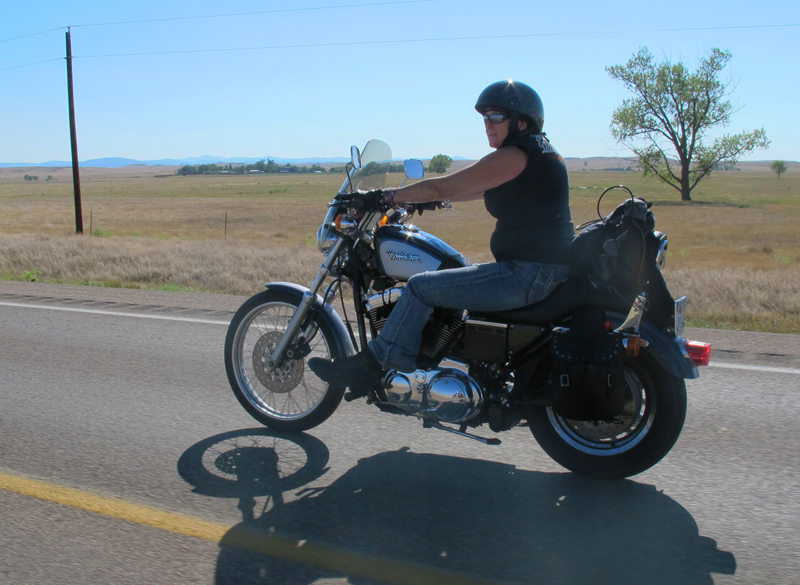
2. Abruptness. You are going to “grab a handful,” “throw the bike into the corner,” “slam on the brakes.” Um … not for long. Understand that “grabbing, throwing, slamming, flicking, or flopping” works just fine until you have more lean angle or the grip is reduced due to weather, new tires, old tires, slick cement, new asphalt, gravel, dirt, mud … go ahead and pick your excuse.
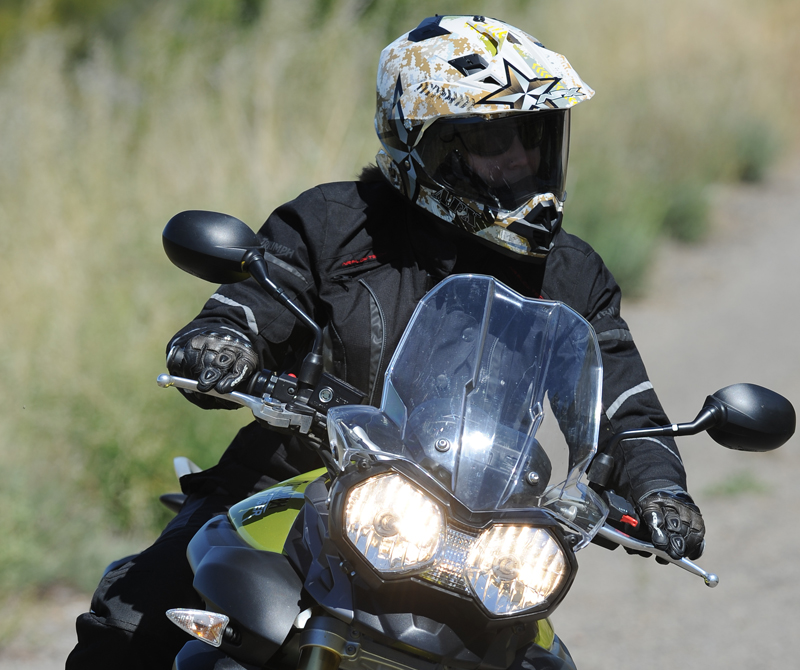
3. Rushing into the corner. Rushing simply means you enter the corner with too much speed for the radius of the corner. A too fast entry speed ruins your exit, pushes you wide, and scares you. You’re rushing because you’re too late to the brakes, you jump off the brakes too early, you never touch the brakes, you stab the throttle when you pick it up, or your body position isn’t allowing the bike to turn. Pick one, and fix it. Remember, there is no penalty for entering a corner too slowly.
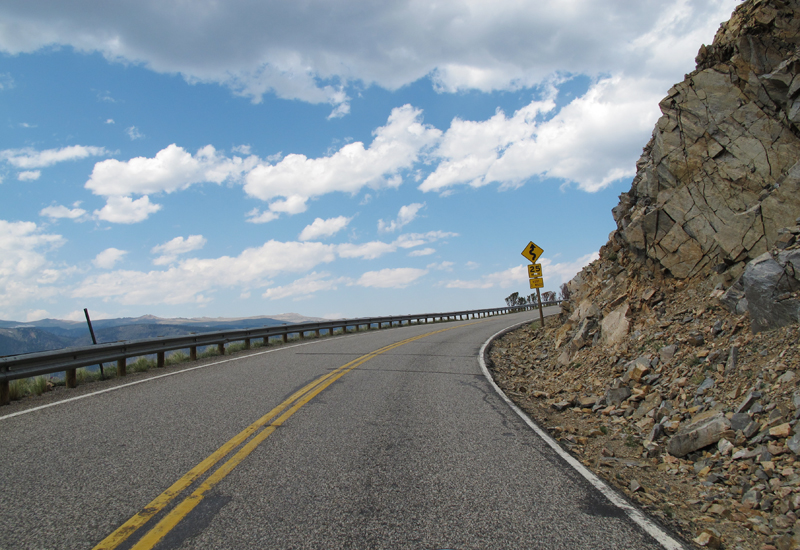
4. Making the same mistake and trying to add speed to it. You know the mistakes you are making, whether it’s getting caught in blind spots, poor emergency-braking performance, missing apexes, jumping around and upsetting the bike … they are the moments you feel scared or uncomfortable. And they are the very things you must work on the hardest.
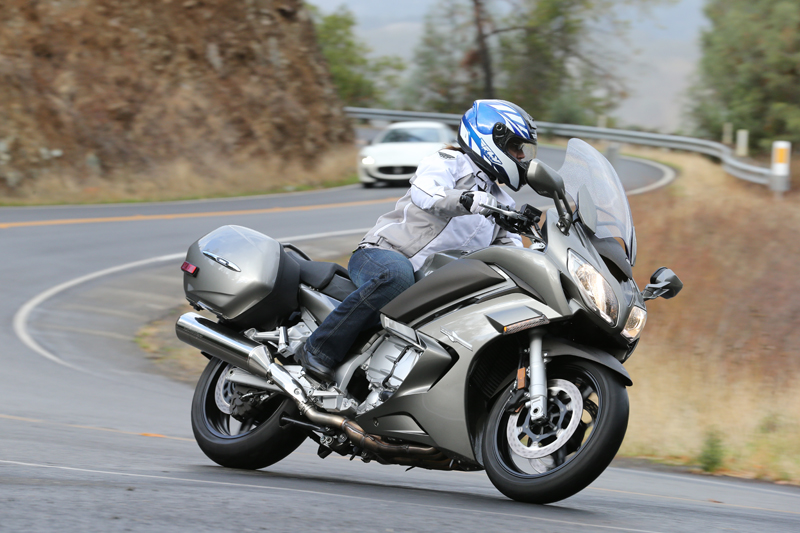
don’t try to just add speed. Mistakes + More Speed = Crash.
5. Cold tires. Yep, it’s that simple. Cold tires. Rubber tires are designed to work within a certain temperature range and they simply have no grip under that range. You already know this, but I’m telling you that cold tires continue to catch out riders who know better but aren’t focused on the problem at the right moment! And that makes all the difference in this sport: having your mind on the next problem at the right moment. How about thinking “COLD TIRES” every time you turn on your motorcycle. Maybe put a little reminder sticker on your triple clamp or tach?
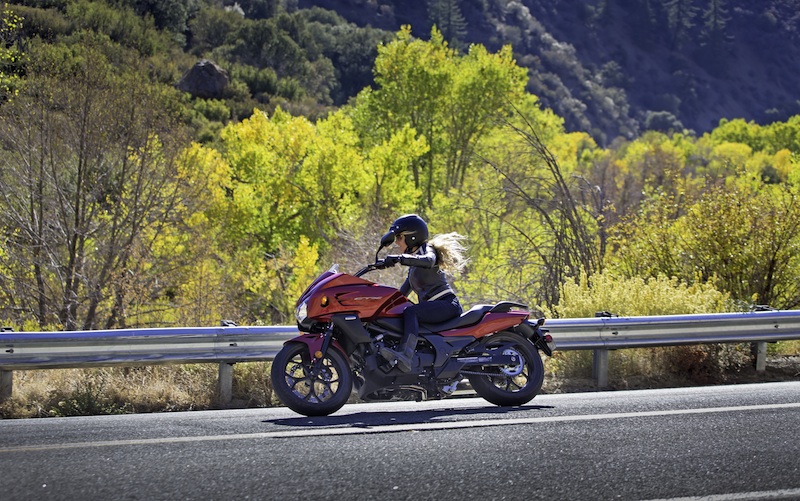
This woman is riding a Honda CTX 700.
Crashes can provide a tremendous lesson, but usually at a high price. The smooth, linear inputs the instructors preach at YCRS allow the bike to communicate to you well before grip becomes an issue (except cold tires, which offer no hint of letting go until you’re skating along on your elbow). This article is an attempt to get your mind focused on the messages from the bike and recognize impending disaster. It’s a skill the best in the world have mastered and it’s a must-do for you too.
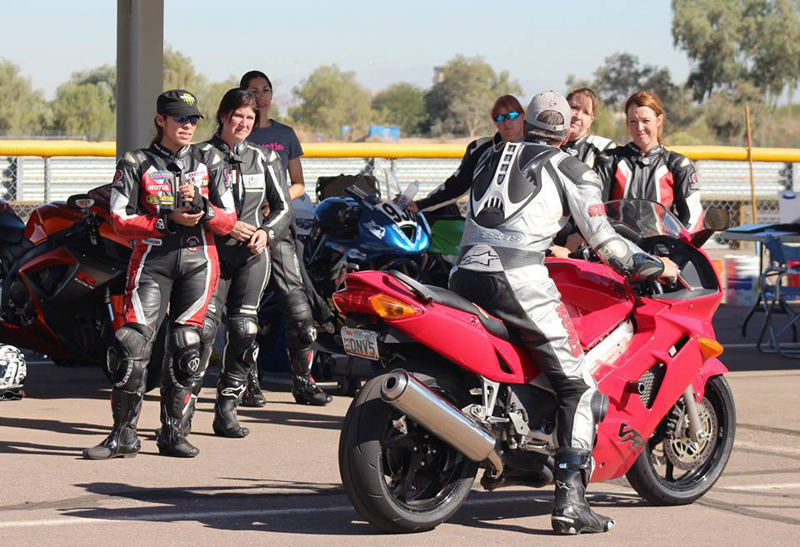
in 2014. Image courtesy of XCEL Trackdays.
About the Author
Nick Ienatsch is the chief instructor at Yamaha Champions Riding School and leader of this standout team of coaches. The Nevada resident has more than 18 years of world-leading motorcycle instruction, heading the Freddie Spencer school and the FastTrack school before that. His teaching techniques are rooted in a successful professional racing career which includes two AMA SuperTeams national championships, four top-three annual finishes in AMA 250 GP competition, two number 1 plates from Willow Springs, three WERA Grand National Championships, and top-three finishes in AMA 600 SuperSport. Nick has been a motojournalist since 1984 and currently writes for Cycle World magazine. Nicks book, Sport Riding Techniques, explains all that he’s learned over his years of riding.
Related Articles
Safe Riding: What A Motorcycle Mishap Can Teach Us
Beginners’s Guide: Track Days & Racing Schools

Good article, but creates many questions. For example; for normal street riding, what’s the best way to warm the tires, and how long, on average, should you spend warming them, to the correct tire temperature the article mentions?
A good rule of thumb is to ride at about 75 percent of your effort and lean for a few miles while the rubber “warms up,” but most especially when air temperature is 55 degrees or less. Street motorcycle tires are designed to warm up quickly, however if you plan to do aggressive riding or canyon carving, it’s a a smart idea to take it easy the first few miles as you start your ride.
I love your articles and have learned so much from them. I am 65 years old and ride a 2015 Kawasaki Vulcan S. I had a scary moment on my first group ride a few months back. I ended up in the lead of half the pack (which I did not want) on a curvy road I had never been on. I took the curve wide in order to see around it because oncoming bikes and vehicles were crossing the center line. I felt my bike pull and not responding to the turn (trees and ravine was the shoulder.) I glanced down and noticed the asphalt had cracked and slipped and that’s where my tire was. I hadn’t seen it going in because the road was shaded. I thought to myself, “I am not dumping my new bike,” so I accelerated. I pulled it out of the crack but in doing so started leaning the other way. On instinct, I tapped my foot on the road and my bike imprinted and off we went. All the bikers behind me were males and when we stopped to regroup with the first half of the pack they are told me they were really impressed with how I got out of it. I am not an experienced rider. God didn’t want me to to wreck my bike either! I have put a lot of miles on it since, all solo because I have no friends that ride. But that is okay. It’s one of the joys in my life.
Very interesting read. I’m taking my mod 1 test this week, hopefully leading to my mod 2 and full license in October. Any advice taken!
Great article and a terrific way to start the riding season.Gentle correction: That’s a Honda CTX 700 in the pictures. Awesome bike – I ride and love one!
Yes, you are right! Thanks for the correction. The CTX 1300 looks very similar to the 700. It even fooled us!We have changed the caption to be correct.
This is a good, basic read, and by coincidence, last week my brother and I rode Hwy 20 up over Washington Pass to Winthrop and had a wonderful time! Of course, we were passed by a handful of squids on wannabe racers, going into corners way too fast … every year they lose one or two of them on that road. I’ve been riding for more than 50 years and have had one really bad wreck, totally my fault. Consider that in the rain, you have, at best, 85% of your usual traction, and apply that to the “cold tire” statement. It’s easy to slip.Also, while I totally agree that one must concentrate on the task at hand, that is, naturally, herding the bike down the pavement and not sightseeing, it is also (in my experience) important to not concentrate to the point of “tunnel vision.” Be aware of all that may be going on around you. Relax. This is supposed to be fun. Tweak your leg and body position a little bit and get comfy. And there you have it—half a century of riding, and that’s what I have. Oh, one other old bromide that still applies: “Dress for the slide, not for the ride.” Totally spot on!
As a very new rider I like digesting all the training tips I can. These are great articles. I have a question about cold tires.How do you know when they aren’t cold anymore? Does it depend on distance ridden? Time? Type of riding? Can you feel the difference?
Tires warm up adequately after about 10 miles of constant riding. Basically the tires need to revolve consistently for about that distance for the air inside to “heat up,” which then warms the rubber making them more “sticky.” Experienced riders can actually feel their tires gripping the pavement more versus cold tires where the rubber is still cold and not sticking to the pavement. The concept of warm tires is borrowed from race tracks where racers need sticky tires as soon as the green flag is waved. That’s why you see racers in the paddocks with heat warmers on their tires, like a heating blanket for their tires. The warm covering keeps the tires a constant temperature so as soon as the rider hits the racetrack their tires grip the pavement better, giving the rider more traction. It’s not that important for everyday casual motorcycle riders, but for those who are ride aggressively or want to carve the canyons right out their front door, being aware of how warm the tires are from the get-go is more of a concern.
My wife and I have been riding since 2010 and this is the first I’ve heard about “cold” tires. It’s not like when we leave the garage we are jumping right into the corners. This has me asking questions to my fellow riders.On another note, I had the opportunity to take a lunch ride from the Puget Sound to Winthrop over an incredibly beautiful mountain pass in Washington State (Hwy 20). The weather couldn’t have been better. Full sun and temps up to the lower 80s. Some of the issues with this is that in the morning you travel into the sun and in the afternoon you again travel into the sun. This was one of the “rules” I remember in my motorcycle safety course. The solution was “don’t do it, but it’s up to you.” It was great to work the corners and try to get better at this art of motorcycle riding as I had the opportunity to follow veteran riders.
Very well written and much appreciated. I have a book or two of Nicks and they are a fabulous read. My wife and I both ride and have been riding for a few decades now and we have seen our fair share of mishaps and certainly learned a thing or two about being safe when we are out and about on our motorcycles … Thank you for this enlightening article.
I love these articles. I also know that taking corners to fast is dangerous. I have had several occasions where I took it to fast because I was trying to keep up with fellow riders. I got close to wrecking my bike several times.
I am an experienced rider and found all those gentle reminders excellent. I like the idea you can never go into any corner too slowly, that is a great thing to remind new riders. Thank you.
Good advice for women, men, new riders and a great reminder for riders in general.
True. Focus. Concentrate. Pay attention. Distractions are too risky. Thanks.
I have only got a year of riding under my belt and read your articles all the time. I can’t thank you enough for the help and the good advice they provide me as I constantly work to improve my skills. Keep them coming!Blessings and ride safely!
Great article. Definitely sharing this one with women riders of Louisiana. Then again, I share almost all the articles with this group. Many of the ladies on this site are within my chapter and we use the articles as teaching points on rides or through LOH. Carry on.
Angie,Thanks for sharing links to our articles with your group. I’m glad you’ve found them useful for all of you.All the best to you,
Joelle: excellent advice! Take time on a new bike; start from the basics if you need to. Each one has its own rhythm, friction zone, braking. I just changed from a Sportster to a Heritage and it’s like going on a first date: some nerves and wanting to impress.
Thank you for this article. All good things to keep in memory. Rubber down. Ride safe and God bless.
On my one-year graduation from the safety class I went with a group for a 150-mile ride. I was feeling confident despite being a newbie. I had this strange pull on my bike towards the side of the road on a few stretches. I called it a vortex. I was at 65 mph, second position in our group and the pull scared me to death. I could not shake the anxiety for an hour. On the way back home I noted that if I focused further down the highway it did not seem to be an issue. Has any one else felt that pull?
Good stuff. The reminder about cold tyres. Plus, my bike is running bit fast at times with new air filter and pipes. Thank you
I just read #3 out loud to my husband. We rode tonight. My first time riding at night. He has a much bigger and more powerful motorcycle and he’s been riding years while I’ve been riding 3 1/2 months. When we got to our destination he told me I should hit the corners faster and I was slowing down too much. So “There is no penalty for entering a corner too slowly,” is exactly what I needed to hear.
I am a new rider. Been riding for a year and a half. These articles do help. Be safe and God bless.
I’ve been riding since 2003, over 19 states but I’ve been off my bike this year due to surgery. These articles have helped me stay on my game!
Being a new rider with a year under my belt, I find these articles very useful, but I guess even the experienced rider may need a reminder. I have seen some experienced riders make mistakes. And going slow into a curve it’s almost common sense. Colorado has beautiful mountain roads, so everyone needs to slow down in a cage or on a bike. Thanks again. I’m always looking forward to reading these articles.
I crashed earlier this week. It was a stop on a hill with a sharp 90 degree left turn. I’d made the turn multiple times successfully, but this time I gave it too much gas and the bike wanted to go straight rather than make the sharp turn. Learned my lesson with that one. If you’re going from a stop on a hill into a sharp turn, throttle is not your friend. Luckily I only busted the throttle cables inside the starter housing and bruised my leg.
Love these posts. Excellent reminders for me as I am on my bike and down the road. Sometimes I can’t remember leaving home and taking any focussed notice.Great stuff Nick. Thanks
Thank you so much for reminding everyone that taking a curve slow is okay! I have been riding for 43 years as of this past summer and this has been my mantra since I slid a brand new bike about 50 feet into a ditch. Now, I would like to tell you that happened more than 40 so years ago, but it was only three behind me. A new bike is like a new man, you got to take it easy on him, until you know you have control. Love to all my fellow women riders!
You are never too old or experienced to learn and re-learn. Thanks for these great riding tips!
I’m a new rider as of May 2014 and I enjoy reading these articles because they help me to remember the things that may slip my mind if I don’t get a chance to ride for a while. I try to make mental notes each time I ride of mistakes I made so that I can correct them next time out and not repeat them. Thanks a lot for the tips and advice.
Thanks! I’m still a beginner. I just started riding in May 2014 on a Triumph America and I’m 57 years old. I can never get enough advice as to what to watch out for. Much appreciated.